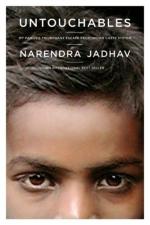
|
| Name: _________________________ | Period: ___________________ |
This test consists of 5 multiple choice questions, 5 short answer questions, and 10 short essay questions.
Multiple Choice Questions
1. In "Chapter Twenty: The Inevitable Narcissism of Caste," what term does Wilkerson introduce that refers to a white person explaining to a Black person something that the Black person has better credentials to understand?
(a) Bulldozing.
(b) Whitesplaining.
(c) Boundary-blindness.
(d) Brahmin-splaining.
2. In "Chapter Twenty-Two: The Stockholm Syndrome and the Survival of the Subordinate Class," what does the Black bailiff do when the white killer of a Black man begins crying about her conviction?
(a) Comforts her by stroking her hair.
(b) Tells her that it will be okay and calls her "honey."
(c) Shoves her as she is being escorted from the court.
(d) Tells her to shut up and stop crying.
3. In "Chapter Seventeen: On the Early Front Lines of Caste," what is the main difference between the various works that Wilkerson discusses?
(a) Their position regarding whether American does or does not have a caste system.
(b) Whether or not the authors actually had first-hand experience in the system they were writing about.
(c) The gender of their authors.
(d) The race of their authors.
4. In "Chapter Eleven: Dominant Group Status Threat and the Precarity of the Highest Rung," what does Wilkerson reveal about the New Deal and the Federal Housing Administration?
(a) Black Americans used these programs as their first "leg up" toward the middle class.
(b) Although intended to help primarily Black Americans, these programs have largely served whites.
(c) White American opposed them initially because they were afraid the aid would go to Blacks.
(d) They were created to help white Americans, and Blacks were largely excluded from their assistance.
5. What prejudice does Tushar, from the London conference in "Chapter Ten: Central Miscasting," say exists inside Indian castes?
(a) Prejudice based on education.
(b) Prejudice based on career achievements.
(c) Prejudice based on skin color.
(d) Prejudice based on wealth.
Short Answer Questions
1. In "Chapter Fourteen: The Intrusion of Caste in Everyday Life," why does Wilkerson include the story of Corey Lewis and the children he was supervising?
2. In "Chapter Twenty-Two: The Stockholm Syndrome and the Survival of the Subordinate Class," what is the purpose of including the story about Deandre Somerville's experience with jury duty?
3. In "Chapter Twenty-Seven: The Symbols of Caste," Wilkerson mentions two films that "fed the country and the world the Confederate version of the war" (335.) One is Birth of a Nation. What is the other?
4. In "Chapter Eleven: Dominant Group Status Threat and the Precarity of the Highest Rung," which group of Americans does Wilkerson say is facing declining life expectancy?
5. In "Chapter Twenty-Five: A Change in the Script," what error of John McCain's does Wilkerson say contributed to Obama's victory?
Short Essay Questions
1. In "Chapter Twenty-Seven: The Symbols of Caste," why does Wilkerson devote so much space to a discussion of Robert E. Lee's treatment of people he held as slaves?
2. In "Chapter Twenty-Five: A Change in the Script," why does Wilkerson say that Barack Obama's parentage helped in his election bid?
3. In "Chapter Twelve: A Scapegoat to Bear the Sins of the World," what is the rhetorical purpose of including the anecdote about the murder of Carol DiMaiti?
4. Summarize the story Wilkerson tells in "Chapter Twenty-One: The German Girl with the Dark, Wavy Hair."
5. In "Chapter Twenty-Five: A Change in the Script," how does Wilkerson say Civil War politics seem to still influence American voting?
6. In "Chapter Twenty-Seven: The Symbols of Caste," why does Wilkerson quote the vice president of the Confederacy's statement about the purpose of the Confederacy?
7. Explain what Erich Fromm says about group narcissism, as described by Wilkerson in "Chapter Twenty: The Inevitable Narcissism of Caste."
8. In "Chapter Fourteen: The Intrusion of Caste in Everyday Life," what is the rhetorical purpose of including the anecdote about the father and toddler in the restaurant?
9. In "Chapter Twenty-Six: Turning Point and the Resurgence of Caste," what does Wilkerson say about understanding the voting of lower-class whites?
10. Who was Satchel Paige, and what does his life story illustrate about race in America?
|
This section contains 1,430 words (approx. 5 pages at 300 words per page) |

|




